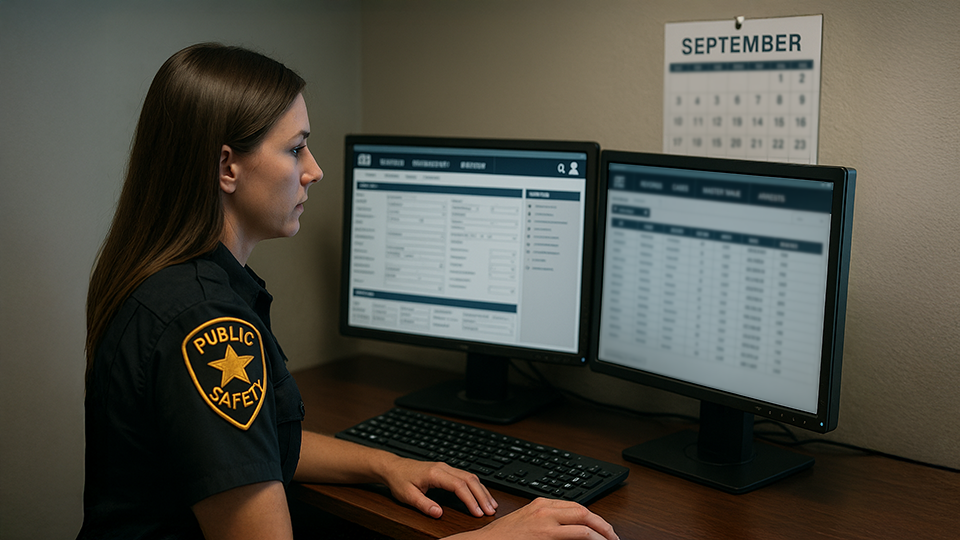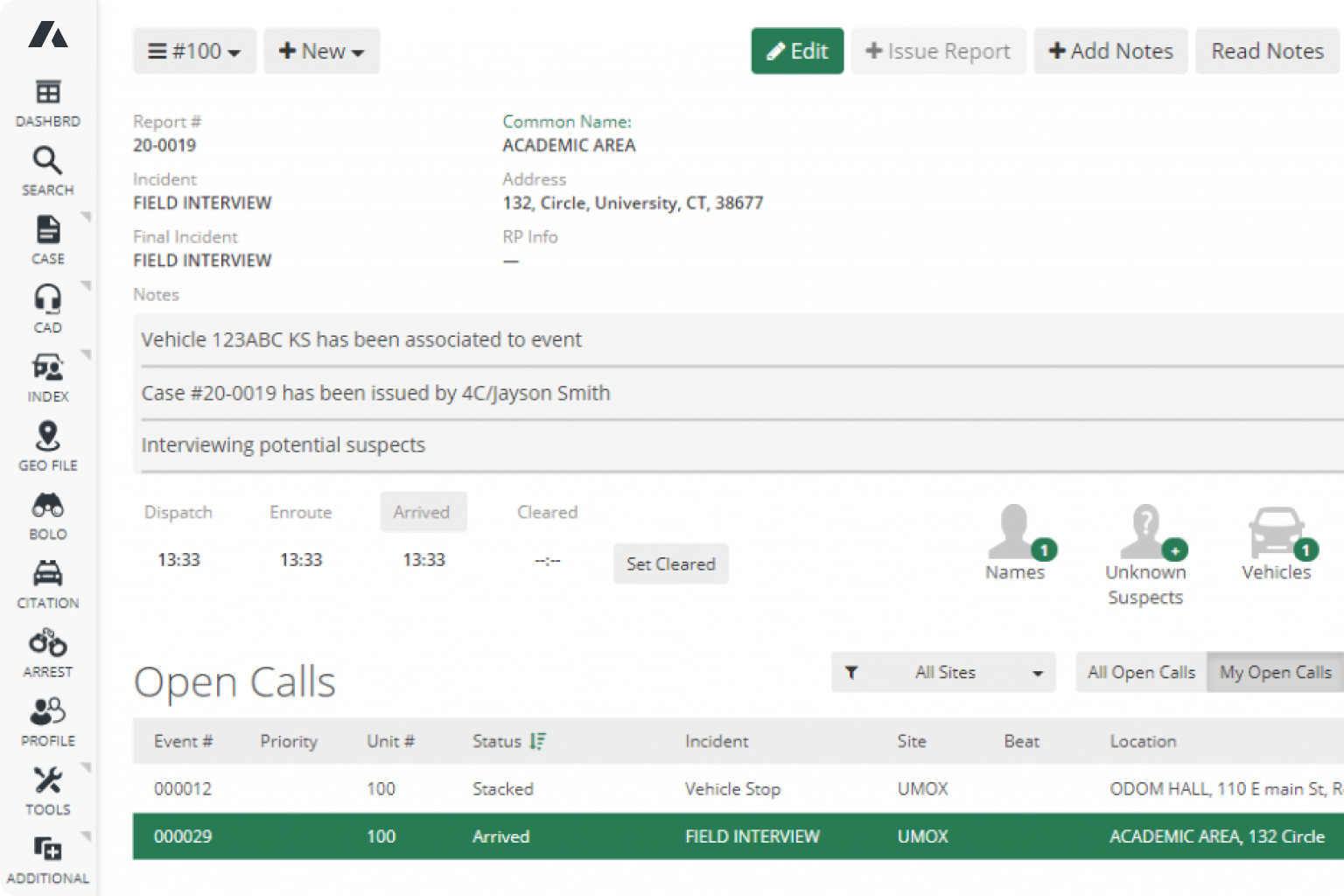Across the public safety sector, many agencies still rely on outdated Records Management Systems (RMS). These legacy tools often slow operations, increase costs, and put agencies at risk of compliance errors. Leaders know a change is necessary—but the question is when. The answer might surprise you: the fourth quarter is the most strategic window to replace your legacy RMS system.
From aligning with budget cycles to capitalizing on compliance deadlines and minimizing operational disruptions, Q4 offers unique advantages that other times of the year simply cannot match.
Budget Alignment & Year-End Opportunities
Every agency works within the constraints of budget cycles. The federal fiscal year ends on September 30, and the new fiscal year begins October 1. This timing often creates a surge in procurement activity as agencies look to obligate “use-it-or-lose-it” funds before the deadline and then immediately access fresh allocations for new projects.
State and local municipal agencies may follow slightly different calendars, but many also plan capital spending toward the end of the year. This means Q4 is often when the funds are available and the purchasing approvals are already in motion. Choosing to modernize your RMS at this point allows agencies to maximize funding opportunities without waiting for another cycle.
Deadlines Create Natural Transition Points
For higher education and municipal agencies, compliance is a constant concern. The timing of annual reporting makes Q4 the most logical period for transition.
- Clery Act: Every year, colleges and universities must submit their Annual Security Report by October 1. Once that deadline passes, campuses have a natural window to evaluate their reporting process and prepare for the next cycle with a modern RMS.
- NIBRS: Crime data reporting follows the calendar year. Migrating in Q4 allows agencies to start January 1 with a clean system aligned to the most current NIBRS standards.
By timing migrations around these deadlines, agencies reduce the risk of errors, fines, or last-minute reporting issues.
Operational Timing: Low-Disruption Windows
Implementing a new RMS doesn’t just require technical resources—it also demands staff time for training, testing, and adoption. Q4 provides several natural opportunities to ease this process. Winter breaks at universities and schools reduce operational pressure, giving departments more flexibility to dedicate staff to onboarding.
Similarly, many agencies experience lighter workloads around the holidays, creating ideal conditions for system configuration and phased rollouts. By scheduling training and go-lives during these periods, agencies can introduce new systems with minimal impact on daily operations.
Reduced Risk with Phased Approaches
Modern RMS providers support phased migration strategies to minimize risk. Q4 provides the runway to start migrations, conduct testing, and launch “soft go-lives” before the start of the new year.
This phased approach ensures:
- Mission-critical operations like dispatch and reporting stay online.
- Rollbacks are possible if needed, without disrupting compliance deadlines.
- Teams have time to adapt gradually rather than rushing during peak operational months.
Strategic Advantages of a Q4 Transition
Migrating to a modern RMS in Q4 isn’t just about timing—it also creates meaningful long-term advantages. By acting before year-end, agencies can sidestep the renewal of expensive maintenance contracts on outdated systems, immediately freeing budget that can be redirected toward modernization. With a new RMS in place, compliance processes are automated and aligned with the latest requirements well before upcoming audits or reporting cycles, reducing the risk of fines and last-minute errors.
A Q4 transition also positions leadership to start the new year with cleaner data, stronger analytics, and more efficient workflows, empowering better decisions from day one. Beyond the operational and financial benefits, moving during this period signals proactive leadership, showing stakeholders and the community that the agency is committed to staying ahead of compliance standards and operational challenges. Agencies that seize this window enter January prepared and confident, while those who delay often spend the first months of the year scrambling to schedule projects in an already crowded calendar.
How ARMS Makes Q4 Transitions Seamless
At ARMS, we understand the unique timing challenges public safety agencies face. That’s why our RMS implementation process is designed to fit the Q4 window:
- 60–90 day implementation means agencies that start in Q4 can go live by January.
- Automated compliance modules for Clery & NIBRS ensure that reporting is accurate from day 1.
- SaaS on Microsoft Azure Government provides unmatched security and compliance with standards like CJIS, SOC 2 Type 2, and ISO 27001.
- 24/7 support ensures your team has guidance every step of the way, even after hours.
Q4 as the Agency’s Best Strategic Window
When it comes to replacing legacy RMS systems, timing is everything. Q4 uniquely aligns budget availability, compliance deadlines, operational downtime, and migration strategies to create the least disruptive and most cost-effective window for change.
By making the switch now, agencies not only avoid the risks of legacy systems but also position themselves to start the new year stronger—with streamlined operations, automated compliance, and a future-ready platform.
Don’t wait until the challenges pile up in the new year! Contact ARMS today to help you take advantage of Q4 to modernize your RMS and set your agency up for success.



